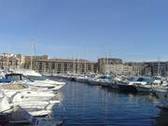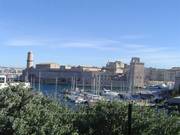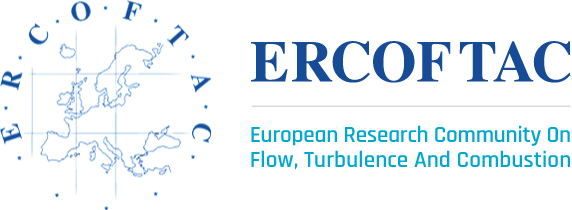Venue - Palais du Pharo, Marseille
 Marseille – originally named Massalia - is the oldest city of France, having been founded in 600 BC by Greeks from Phocaea as a trading port. The town prospered and eventually came under the rule of the Romans, who built massive fortifications. Marseille was the main port of trade between the Romans and Gaul, an arrangement that made the city one of the richest in the region. After the fall of the Roman Empire, Marseille was often besieged by ‘barbarian’ hordes; however, its status as one of the pre-eminent trading ports on the Mediterranean meant it could always rebound quickly from any attack and often benefited from its ‘neutral’ status by supplying both sides of any wider conflict. The fortifications were very solidly built and protected the town so well that parts of Marseille were only overrun infrequently during this turbulent time, and the heart of city was never captured.
Marseille – originally named Massalia - is the oldest city of France, having been founded in 600 BC by Greeks from Phocaea as a trading port. The town prospered and eventually came under the rule of the Romans, who built massive fortifications. Marseille was the main port of trade between the Romans and Gaul, an arrangement that made the city one of the richest in the region. After the fall of the Roman Empire, Marseille was often besieged by ‘barbarian’ hordes; however, its status as one of the pre-eminent trading ports on the Mediterranean meant it could always rebound quickly from any attack and often benefited from its ‘neutral’ status by supplying both sides of any wider conflict. The fortifications were very solidly built and protected the town so well that parts of Marseille were only overrun infrequently during this turbulent time, and the heart of city was never captured.
In 1660, King Louis XIV removed parts of the original town fortifications to allow the spreading out of the city, which soon thereafter encompasses parts of the south side of the harbour and spread inland. After recovering from the Great Plague in 1720, trade with the East resumed and was widened to incorporate routes to Central and South America as well as the Caribbean. Marseille became more prosperous than ever. It began to attract many immigrants from Africa and the French colonies as well as trading partners across the globe. The local population enthusiastically embraced the French Revolution and sent 500 volunteers to Paris in 1792 to defend the revolutionary government; their rallying call to revolution, sung on their march from Marseille to Paris, became known as La Marseillaise, now the national anthem of France.
 During the nineteenth century the city was the site of industrial innovations and a growth in manufacturing. The rise of the French Empire and the conquests of France from 1830 onward (notably Algeria) stimulated the maritime trade and raised the prosperity of the city. Maritime opportunities also increased with the opening of the Suez Canal in 1869. This period in Marseille's history is reflected in many of its monuments, such as the Napoleonic obelisk at Mazargues and the royal triumphal arch in the place d'Aix.
During the nineteenth century the city was the site of industrial innovations and a growth in manufacturing. The rise of the French Empire and the conquests of France from 1830 onward (notably Algeria) stimulated the maritime trade and raised the prosperity of the city. Maritime opportunities also increased with the opening of the Suez Canal in 1869. This period in Marseille's history is reflected in many of its monuments, such as the Napoleonic obelisk at Mazargues and the royal triumphal arch in the place d'Aix.
During the latter part of the 20th century, Marseille experienced a sharp downturn in its wealth and status. In recent years, however, Marseille has been revived, with new life and money being injected into the older districts. Marseille is gradually recovering its former glory, and with the ongoing renovations, the city has become one of France’s most popular destinations for holidaymakers.
Marseille is easily reached by air, road and rail. It has an international airport offering daily flights to most other major European cities. It is also served by several motorway and railway links, the fastest being the high-speed-train (TGV) service from Paris, taking around three hours.
Palais du Pharo
..........overlooks the harbour (Vieux-Port) and the Château d'If, famous for being the prison of the Comte (Count) de Monte Cristo. It is easily reached within 10 minutes, on foot, from Marseille city centre, along the Marina. The Palace was built as the sea-side residence of Napoleon III, although he never lived in it. Passing through the town in 1852, he visited La Tete du More and remarked that he "had always wanted a home where he would have his feet in the sea." The matter was sealed and the town Council duly bought him the land as a gift. Under the guidance of Lefuel, one of the architects who had worked on the Louvre, the first foundations were laid in August 1858. Built in stone and ornately decorated, the Palace is typical of the lavish style of the Second Empire. Napoleon's wife, empress Eugenie de Montijo, eventually bequeathed the palace to the city of Marseille in 1883.
Adjoining the Palace, and within the enclosed Palais du Pharo gardens, are the residence of the Rector of the University of Marseille, the Military School of Tropical Medicine and the Municipal Assembly building, all three of which will be used for ETMM-8 sessions. The old Palace interior is generally closed to the public, but the gardens, which look out onto the historic old port, the military fort and Cathedral de la Major, are open and freely accessible.


